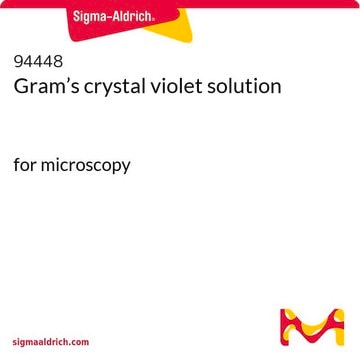This product has not been tested for use in any specific application, including cell viability assays. Suitability would have to be determined by the end user. However, this compound is rarely utilized in determining cell viability. Compounds such as Trypan blue and MTT tend to be the indicators of choice. Please see the links below for additional information that may be helpful.
1. Crystal Violet in cell viability determination:
https://pubmed.ncbi.nlm.nih.gov/27037069/
2. Available reagents and kits for determining cell viability:
https://www.sigmaaldrich.com/technical-documents/technical-article/cell-culture-and-cell-culture-analysis/imaging-analysis-and-live-cell-imaging/cell-viability-and-proliferation#Trypan-Blue










